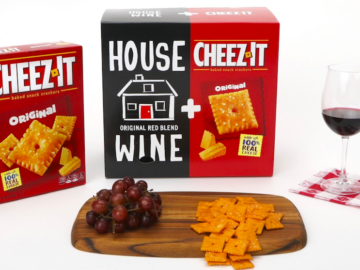I’ve seen a lot of interesting food varieties in my day but I have to admit that these bananas are over the top.
This popular variety of banana, the Blue Java, is more than beautiful. It is becoming increasingly popular because it is very similar to vanilla ice cream in its consistency and in the way it tastes. The name, Blue Java, comes from the unique, aqua-blue peel but when you open it, the real treat is on the inside. The color of the inside is yellow-white but the taste is out of this world.
Although Blue Java is perhaps the most popular designation for this fruit, it is also known by other names. This includes the ice cream banana in Hawaii, Cenizo in Central America and Hawaiian banana in Fiji.
This banana originates from South-East Asia and is now found on other continents, including Northern Australia. Typically, bananas do not grow well in colder regions because they are a tropical fruit. The better-known varieties of bananas will not grow if the average temperature is lower than 40 degrees Fahrenheit and will die when the temperature hits 28. It is possible to grow the hardy Blue Java banana, however, at temperatures as low as 20F.
Would You Like To Grow The ‘Ice Cream Banana’?
You can grow this variety in your own yard if your climate is suitable. In the United States, you can grow the Blue Java in USDA’s zones 9b through 11, but some areas in zone 8 will do fine. The zone map splits the United States into 11 zones with each zone being 10F warmer or colder than the zone next to it. It helps gardeners and farmers know the suitable plants to grow in their area.
When the Blue Java tree is fully grown, it will be up to 20 feet high. It takes about 9 months for the leaves to appear if you plant a pseudostem. The trees can also be delivered for planting in various stages of development.
It doesn’t take much effort to grow bananas but here are some tips to get you started.
Bananas love moist conditions. The soil should be rich, warm and well watered. Blue Java plants should be watered frequently and adequately during the growing season but you don’t want the plant to float. Be aware of the soil depth as well so you don’t end up with root rot.
Use an NPK fertilizer with nutrients in the ratio of 3:1:6 to nurture your plant. Use the fertilizer when the weather is warm. Spray it around the root area to get down into the soil. Add one cup of fertilizer per every 2 feet of plant growth.
Prune the secondary shoots around each rhizome. A minimum of 1 shoot should be left for continued growth. Excess shoots will stunt the growth of the tree.
Bananas require sunlight to germinate. It can grow in full or partial sunlight but it is hard to germinate plants if they are in overcast conditions.
Uses for Blue Java
The strong, wide leaves of the Blue Java plant can be used as parchment paper or as another type of wrapping for cooking. They can also be used when boiling, steaming, baking, grilling or drying. One thing to remember is the porous nature of the leaves may allow juices to leak through. Putting the leave wrapped food inside a casserole dish will help to reduce messes.
Many people just enjoy the vanilla ice-cream flavor by eating it in place of ice-cream. Bananas contain a lot of energy and are low in fats. 100 grams of banana contains about 0.3g of fat, 22.8g of carbs, and 89 calories.
Bananas are a rich source of potassium, a mineral that supports nerve cell response and proper muscle contraction. Getting enough potassium in your diet helps to lower blood pressure and is important for proper heart contraction.
You can easily replace ordinary bananas with the Blue Java in any and all recipes. They make wonderful smoothies, banana pancakes, banana oatmeal cookies and, of course, banana ice-cream.






